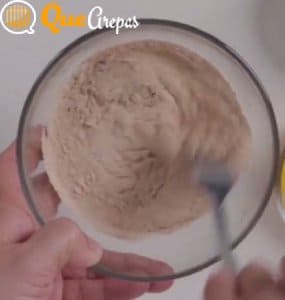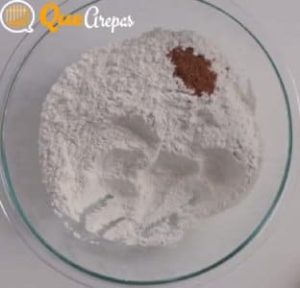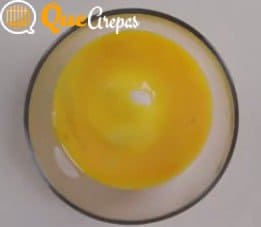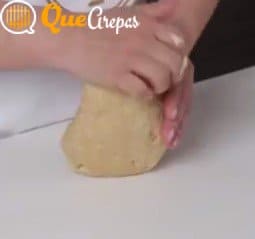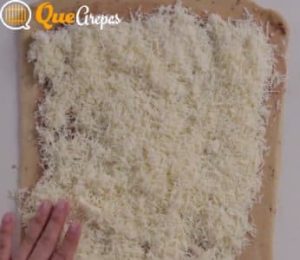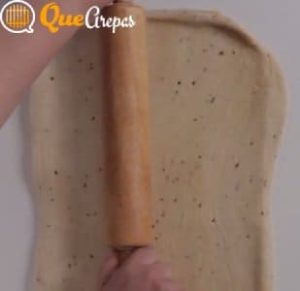Discovering the Delicious Enchantment of Venezuelan Golfeado: Traditional Recipe and Culinary Secrets
Immerse yourself in the irresistible world of Venezuelan Golfeado: a sweet that will transport you to the rich culinary tradition of Venezuela. Its soft and spongy dough, filled with papelón and white cheese, will conquer you with every bite. Follow our recipe and discover the authentic flavor of this gastronomic jewel, get ready for a journey of unforgettable flavors!
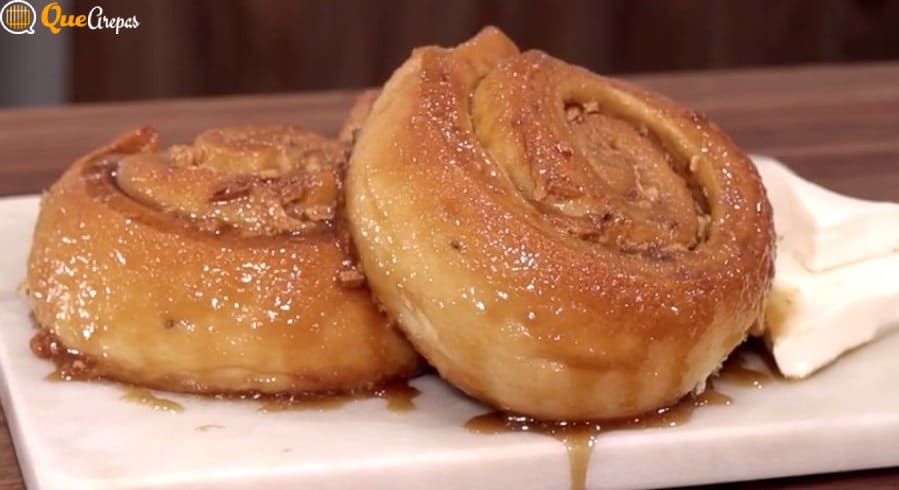
Bienmesabe Venezolano, Quesillo Venezolano, Torta de Pan, Conservas de Coco, Dulce de Lechoza, Majarete de Coco Venezolano
Golfeado Venezolano is a traditional Venezuelan sweet that has conquered the hearts of locals and visitors alike. With its soft and spongy dough, filled with papelón and white cheese, and flavored with anise and cinnamon, Golfeado is a unique delicacy that represents the country's gastronomic richness. In this article, we will explore this Venezuelan delicacy in depth, from its historical origins to the detailed steps to prepare it at home.
- What are Venezuelan Golfeados?
- History and origin of the Venezuelan Golfeado
- Fundamental Ingredients for the Venezuelan Golfeado
- Step by Step: Making the Perfect Dough
- The Aromatic Touch: Paprika, Cinnamon and Aniseed
- Form and Presentation of the Golfeados
- The Perfect Bake: Texture and Appearance
- Venezuelan Golfeado Recipe - quearepas.com
- Presentation and suggested accompaniments of the Venezuelan Golfeado
- Venezuelan Golfeado Innovation and Variants
- Frequently Asked Questions
What are Venezuelan Golfeados?
Golfeados are a traditional Venezuelan sweet. They are rolls of soft and spongy dough, filled with papelón (panela) and grated white cheese. They are known for their sweet and sour flavor and juicy texture.
History and origin of the Venezuelan Golfeado
Culinary influences in the creation of Golfeado:
Venezuelan Golfeado is the result of a fusion of culinary influences that have left their mark on Venezuelan cuisine over the years. Among the main influences are Spanish and indigenous Venezuelan cuisine. The arrival of the Spanish in Venezuela brought with them ingredients such as wheat flour and sugar, which became key elements in the preparation of Golfeado. On the other hand, the culinary wisdom of the indigenous peoples contributed preparation techniques and the use of native ingredients.
Legends and stories about the origin of Golfeado:
Venezuelan Golfeado is shrouded in a series of legends and stories that add a mystical touch to its history. One of the most popular legends tells that its name comes from the region of El Golfo, located in the Miranda state of Venezuela. According to the story, in that area they used to prepare sweets similar to today's Golfeados. Another version tells that Golfeado was a delicacy prepared by African slaves during colonial times, who used local ingredients and their own techniques for its preparation. These stories and tales have contributed to enrich Venezuelan gastronomic folklore and to perpetuate the Golfeado tradition over time.
Fundamental Ingredients for the Venezuelan Golfeado
In the creation of Venezuelan Golfeado, each ingredient plays a crucial role in the construction of its distinctive flavor and unique texture. These components work in harmony to capture the essence of the Venezuelan culinary tradition and provide a unique dining experience. Below, we take a closer look at the importance of each of these elements:
- Wheat Flour: The Base of the Dough and its Importance in the Final Texture Wheat flour is the foundation on which the texture of the golfeados is built. When kneaded with precision and combined with the other ingredients, it creates the desired structure and consistency. Choosing the right wheat flour and handling it in the dough ensures that the golfeados are soft, tender and slightly elastic.
- Yeast: The Secret Ingredient for a Fluffy, Airy Dough Yeast is the ingredient that triggers the magic of rising in golfeado dough. By fermenting and releasing gases, yeast results in a fluffy and airy dough, which translates into the characteristic fluffy texture of golfeado. It is essential to respect the leavening times to achieve the desired structure in the final product.
- White Sugar and Papelón: A Sweet and Deep Flavor Balance The combination of white sugar and papelón is fundamental to the distinctive flavor profile of golfeado. White sugar brings sweetness and clarity to the dough, while papelón, a type of whole cane sugar, adds depth and a caramelized note. This balance of sweetness creates a rich and unique flavor experience in every bite.
- Anise: Bringing a Distinctive Aromatic Touch Anise is the ingredient that adds a unique aromatic dimension to golfeado. Its intoxicating aroma blends with the other flavors, creating an unmistakable fragrance that evokes traditions and memories. Anise may also have digestive properties that complement the richness of the recipe.
- Cinnamon: The Touch of Spice that Enhances the Experience Cinnamon is the spice that adds a touch of spice and warmth to the golfeado. Its presence in the dough and in the papelón mixture adds depth to the overall flavor. In addition, cinnamon is a spice that has historically been valued for its aroma and health benefits.
- Butter and Egg: Components that Soften and Enrich the Dough Butter and egg are essential ingredients that add richness and softness to the golfeado dough. Butter contributes to the tender texture and provides a slightly salty flavor that balances the sweetness of the other ingredients. The egg, on the other hand, adds moisture and acts as a binding agent, giving cohesion to the dough and improving its structure.
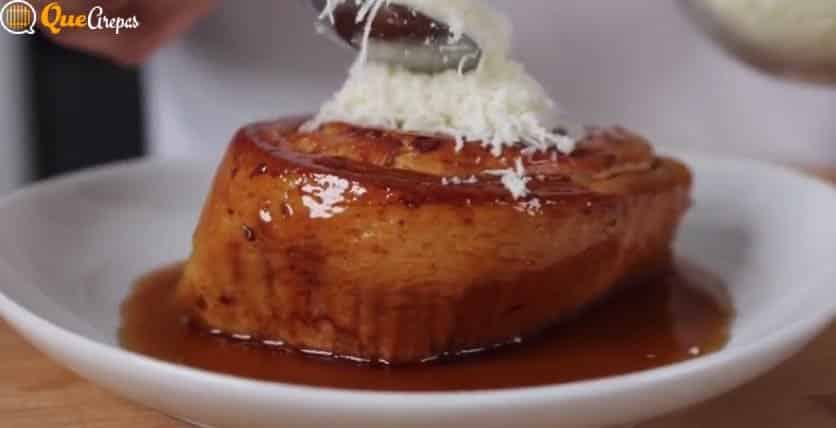
Step by Step: Making the Perfect Dough
Initial Preparation: Hydrating the Yeast and Mixing Dry Ingredients Before you begin, make sure you have all the ingredients measured and ready. Start by hydrating the yeast in warm water for a few minutes until it becomes foamy. Meanwhile, mix the dry ingredients: wheat flour and salt. The salt not only adds flavor, but also helps regulate the yeast fermentation.
Liquid Integration: Incorporating Water, Egg and Butter to Form the Dough Once the yeast is activated, add the beaten egg and melted butter to the mixture. These liquids will add moisture and softness to the dough. Pour the liquid mixture into the center of the dry ingredients and begin mixing with a wooden spoon or spatula, forming a dough.
Kneading and Resting: Techniques for Developing Elasticity and Resting the Dough Transfer the dough to a floured surface and begin the kneading process. Fold the dough over and flatten it with your hands, then turn a quarter turn and repeat. This kneading process helps develop the gluten in the flour, which will give the dough structure and elasticity. Once the dough is smooth and elastic, form it into a ball and place it in a floured bowl, covering it with a damp cloth. Let it rest in a warm place until it doubles in size.
The Aromatic Touch: Paprika, Cinnamon and Aniseed
Dissolving the Papelón: Creating a Sweet Syrup with Depth Grate the papelón into small pieces and dissolve it in hot water, creating a thick, sweet syrup. This syrup will add a unique depth of flavor and a caramelized note to the dough. Allow the syrup to cool before incorporating it into the dough.
Incorporating Cinnamon and Anise: Infusing the Dough with Irresistible Fragrances Add the cinnamon and anise to the dough during kneading or after the yeast has risen. Knead again to ensure that these spices are evenly distributed. These ingredients will not only add flavor, but also an unmistakable aroma that will elevate the Venezuelan Golfeado tasting experience.
Form and Presentation of the Golfeados
Dividing and Shaping the Dough: Creating Individual Portions for the Golfeados After resting, turn the dough out onto a floured surface and divide it into individual portions of the desired size for the golfeados. Form each portion into a ball and set aside.
Rolling and Placing in the Mold: Technique for Achieving the Characteristic Shape Take a portion of dough and roll it out into a rectangle. Sprinkle the surface with paprika and cinnamon and then roll the dough from one end to the other. Place the roll in a previously greased baking pan, seam side down. Repeat this process with the remaining portions, making sure they are properly spaced in the pan.
Final Rest: Letting the Dough Rise Before Baking Cover the pan with a clean, damp cloth and let the golfeados rest in a warm place for about one hour. During this time, the dough will continue to rise and increase in size. This will contribute to the fluffy and airy texture in the final result.
The Perfect Bake: Texture and Appearance
Baking Temperature and Time: Achieving Even and Golden Cooking Preheat your oven to a temperature of approximately 180°C (350°F). Once the golfeados have finished resting and have risen, place the pan in the preheated oven. Baking time may vary, but will generally take between 20 and 25 minutes. During this process, the golfeados will turn a beautiful golden brown on top.
Visual Observation: How to Know When the golfeados are Ready The best way to determine if the golfeados are ready is by visual observation. You should look for a golden appearance and a puffy look. Also, you can insert a toothpick into the center of one of the golfeados; if it comes out clean, it means they are cooked inside. Keep in mind that cooking time may vary depending on the size of the golfeados and the characteristics of your oven, so keep a close eye on them.
Here is the complete recipe step-by-step, thanks to Trigo y Miel Bakery

Venezuelan Golfeado Recipe - quearepas.com
Equipment
- 1 Large bowl for mixing ingredients
- 1 Spatula or wooden spoon for mixing the batter
- 1 Rolling pin for rolling out the dough
- 1 Rectangular mold for baking Golfeado
- 1 Baking paper or waxed paper for lining the baking pan
- 1 Kitchen brush to spread butter in the pan
- 1 Sharp knife to cut portions of the Golfeado
- 1 Preheated oven for baking the Golfeado
Ingredients
- 1/2 Kg Wheat flour
- 175 ml Water
- 15 gr Yeast
- 100 gr White sugar
- 1 unit Egg
- 25 gr Papelón (panela)
- 5 gr Cinnamon powder
- 3 gr Salt
- 2 tbsp Butter
- 1 tbsp Aniseed
Instructions
- Activation of the yeast and preparation of the yeast starter: To start, activate the yeast in a small container. Dissolve 5 grams of yeast in 50 ml of warm water and add a teaspoon of sugar. Mix well and let stand for 10-15 minutes until a foam forms on the surface. This indicates that the yeast is active and ready to be used.
- Mixing the dry ingredients: In a large bowl, sift 500 grams of wheat flour. Add 100 grams of white sugar, 5 grams of cinnamon and 3 grams of salt. Mix all the dry ingredients with a spatula or wooden spoon until well combined.
- Incorporation of liquid ingredients: In another bowl, lightly beat one egg. Add the beaten egg, the activated yeast starter and 125 ml of warm water to the bowl with the dry ingredients. Mix everything with a spatula or wooden spoon until a homogeneous dough is obtained.
- Kneading and resting the dough: Transfer the dough to a lightly floured work surface. Knead the dough for about 10 minutes, stretching and folding it repeatedly until it is smooth and elastic. Form the dough into a ball and place it in a bowl lightly greased with oil.Cover the bowl with a damp cloth and let the dough rest in a warm place for at least 1 hour or until doubled in size.
- Preparation of the paprika and cheese filling: Grate 200 grams of white cheese and crumble 200 grams of paprika. Mix both ingredients in a bowl until well combined.
- Forming the Golfeados: Roll out the dough on a floured surface until it is about 1 cm thick. Cover the dough with the papelón and cheese mixture, leaving a border of about 2 cm on all sides. Roll up the dough from one of the longer ends, like a gypsy arm. Press the edges lightly to seal the roll and cut into slices about 2 cm thick.
- Baking the Golfeados: Preheat the oven to 180°C and place the Golfeado slices on a greased baking sheet or lined with baking paper. Let the Golfeados rest for 15-20 minutes to allow them to leaven before baking. Bake the Golfeados for about 20-25 minutes, or until golden brown and firm to the touch. Remove from the oven and let cool for a few minutes before serving.
Video
Notes
Nutritional Information
The nutritional information for Golfeado Venezolano may vary depending on the ingredients and proportions used in the recipe. The following is a general estimate of the nutritional values per serving (approximately 100 grams) of Golfeado:- Calories: about 350-400 kcal
- Fats: about 10-15 grams
- Carbohydrates: about 60-70 grams
- Protein: about 5-8 grams
- Fiber: about 2-4 grams
- Sugars: about 25-30 grams
- Sodium: about 100-150 mg
Presentation and suggested accompaniments of the Venezuelan Golfeado
A. Creative ways to present Golfeado:
Golfeado can be presented in different ways, providing creative options to enjoy this delicious Venezuelan sweet. Some ideas include:
- In individual dish: Serve each Golfeado in an individual dish, sprinkling them with a little powdered sugar or cinnamon before serving. This gives them a visual touch and enhances their appetizing appearance.
- On a presentation platter: Place the Golfeados on a large platter or presentation platter, lining them up neatly. You can sprinkle powdered sugar over them or add a light layer of grated papelón to enhance their appearance.
- In individual molds: Use individual silicone or baking paper molds and bake the Golfeados directly in them. This will give them a more defined shape and facilitate their handling and individual presentation.
B. Traditional beverages that complement the taste of Golfeado:
Golfeado is even more enjoyable when accompanied by traditional beverages that enhance its flavor and balance its sweetness. Some popular choices are:
- Coffee: A good black coffee or café con leche is a classic choice to accompany Golfeado. The bitterness of the coffee contrasts with the sweetness of the Golfeado, creating a delicious combination.
- Hot chocolate: A rich hot chocolate prepared with milk or water is a comforting option to accompany Golfeado. The sweet and creamy flavor of the chocolate complements well with the spongy texture of the Golfeado.
- Orange juice: If you prefer a refreshing option, a glass of freshly squeezed orange juice may be a suitable choice. The acidity and citrus flavor of the orange juice contrasts with the sweetness of the Golfeado, creating a nice balance.
These are just a few suggestions, but you can experiment and combine Golfeado with your favorite beverages to discover new and delicious combinations. Enjoy this Venezuelan delicacy with a drink that complements its flavor!
Venezuelan Golfeado Innovation and Variants
Venezuelan Golfeado is a traditional sweet that has been subject to innovation and adaptation over time. Here are two popular approaches to give Golfeado a modern and healthy twist:
Modern fusions: Golfeados filled with chocolate, fruits and more:
One way to innovate with Golfeado is to experiment with creative fillings. Instead of using only papelón and cheese, you can add other ingredients that complement and enhance the flavor. Some options include:
- Chocolate Filling: Add dark chocolate or hazelnut chocolate chips inside each Golfeado before rolling. The heat of the oven will melt the chocolate, creating a smooth, decadent interior.
- Fruit filling: Add thin slices of banana, pineapple or apple inside each Golfeado before rolling. The caramelized fruits will add sweetness and a juicy texture to the sweet.
- Nut Filling: Add chopped nuts, such as pecans or Brazil nuts, to the papelón and cheese mixture. These modern fusions allow you to experiment with different flavors and textures, creating unique variations on the traditional Golfeado.
Healthy adaptations: Options with whole-grain ingredients and less sugar:
For those who wish to enjoy a healthier version of Golfeado, adaptations can be made by using whole-grain ingredients and reducing the amount of sugar. Some suggestions are:
- Whole wheat flour: Replace some or all of the white wheat flour with whole wheat flour. This will increase the fiber and nutrient content in the Golfeado.
- Sugar substitutes: Use natural sweeteners, such as stevia or agave syrup, instead of white sugar. Adjust the amounts according to your sweetness preferences.
- Healthy fats: Instead of traditional butter, use coconut oil or extra virgin olive oil. These adaptations allow you to enjoy a more balanced and nutritious Golfeado, without compromising its characteristic flavor and texture.
Continue enjoying more Venezuelan desserts after savoring some delicious arepas.
Frequently Asked Questions
How are Venezuelan Golfeados made?
To make Golfeados Venezolanos, a dough is prepared with wheat flour, yeast, sugar, salt and butter. Then, roll out the dough, add the mixture of papelón and cheese, and roll it up. They are cut into slices and baked until golden brown.
What is the papelón of the Venezuelan Golfeados?
Papelón is a traditional sugar in Venezuela, also known as panela in other countries. It is obtained from sugar cane and is used to give that characteristic sweet and sour flavor to Golfeados.
What are the traditional accompaniments for Venezuelan Golfeados?
Venezuelan Golfeados are usually accompanied with black coffee or coffee with milk. The contrast between the sweetness of the Golfeado and the bitterness of the coffee creates a delicious combination. They can also be served with a glass of orange juice or hot chocolate.
If you want to know other articles similar to Discovering the Delicious Enchantment of Venezuelan Golfeado: Traditional Recipe and Culinary Secrets you can visit the category Desserts.

